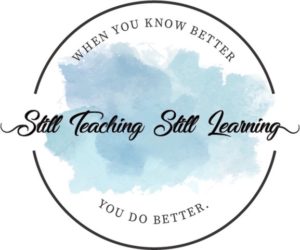
All students, no matter the level, want their teachers to like and respect them.
Some students have been disappointed by adults (either school adults or home adults) and may try to act as if they don’t care whether you like them or not, but this tends to be a defense mechanism.
Our job, with all of our students, is to find things to like and respect and to communicate that to our students. Here are some suggestions for how to do that!



By the way, if you’re new to upper elementary grades or just want to know what to expect, here are eight generalizations I have found helpful to know. (This is the fifth post in a series where I will discuss each of these eight topics in more depth, along with some tips for how to address upper elementary students’ needs. (You can read the first post in the series HERE, the second post HERE, the third post HERE, and the fourth post HERE.)
1 – They want to know the rules and expectations & they expect the teacher to be “the boss”.
2 – They thrive on routine with occasional changes to liven things up – they want you to be predictable, but engaging & fun.
3 – They want to be part of a supportive community. They don’t want to be embarrassed in front of their peers or to feel “stupid”. They worry about bullies.
4 – They want to be more independent & to be asked for their input. They still want to please their teachers (even though some may not show it).
5 – They still love to help and to feel useful.
6 – They want to know their teacher likes them & respects them
7 – They want to learn more about the world and about topics they care about. They do question things and want to know the “why.” They are starting to understand different viewpoints besides their own, which makes for some thoughtful classroom discussions. They still get excited about learning! That being said, they will be at very different achievement levels (similar to lower grades), but they are better at hiding their lack of understanding. The curriculum is more difficult, but they are capable of rising to the challenge. Most of them love to work together and find that to be more engaging.
8 – They still want their grownups/families to be proud of them.



In this post, we’ll focus on observation six. Upper elementary students want to know their teacher likes and respects them. As I mentioned in the last post, encouraging students’ independence and asking for their help and input are great ways to show that you like and respect them.
This post is all about building and maintaining great relationships with students. Those relationships go a long way toward curbing negative classroom behaviors. (Notice I didn’t say it will eliminate everything – sometimes there is much more going on with a student’s emotional and mental health – but a good relationship with a caring adult makes a big difference.)



A few things to remember:
~”First, do no harm.” They are still children! You are the adult. (I actually keep the words “You are the adult” on a sticky note on my clipboard. I need reminding sometimes.)
Before you say anything or react to anything, think about what you will be communicating and teaching with your words. Take a deep breath & count to five before speaking/reacting.
~Every student is someone’s child. Think about how you would want someone to respond if this were your child.
I know we can tend to think, “If this were my child, they would never act this way!” But remember that all children need direction and discipline. Some need it more than others.



~Try not to take behavior personally. That’s hard, I know, and I am not suggesting that you allow yourself to be abused with disrespect. But try to disconnect a bit and think about what the child needs right now. (Sometimes what the child needs right now is to be removed from the classroom so that you can continue to teach the other students.)
~Default to compassion. (Again, give yourself some time if “compassion” is not your first thought.) Give kids the benefit of the doubt.
~Students will remember kindness, not curriculum.



LEARNING NEEDS
*Ask your students to tell you what they need in order to do their best learning. Quiet music? Different lighting? Standing up at a counter instead of sitting? This helps them to think through what they actually do need and to communicate that appropriately. You can use a checklist for this, or just ask verbally and list their suggestions.
*Be “real” about your own struggles and mistakes. This shows that you are human and it models learning from mistakes.
*Apologize publicly when needed. This earns their respect and also models appropriate ways to respond to mistakes.



*Every day, focus on a new day being a new beginning and a fresh start. Even if I had to redirect (or fuss at!) a student at the end of the day, I would always emphasize that tomorrow is a new day and a chance to do better. That is a powerful message for all of us.
*Take notice of when your students might be stressed by the pace of your curriculum. There is much we cannot control about curriculum pacing. But if you can squeeze out even 10-15 minutes of time to “catch up,” you will be showing them that you care about their stress and you want to help. (This gives you a bit of a mental break too.)
*Don’t be afraid to veer from the lesson plan if something isn’t going as planned. Acknowledge whatever it is your students are showing you that they need. Do they need another explanation? A more concrete way to learn a math concept? Ask them, then do your best to provide what they need.



BUILDING INDIVIDUAL RELATIONSHIPS
*In my earlier posts, I have talked a lot about the importance of building relationships and class community. Try very hard to establish an anti-bullying culture and a kindness culture from day one. Use read-alouds, have daily class meetings, post kindness posters (here are some free ones from We Are Teachers).
*You hear a lot about the importance of building relationships with students. And yes – it is very important and it is what brings joy to an often difficult job. It won’t solve every problem, but when students feel a bond with you, they will do better, both academically and behaviorally.
Building those relationships starts on day one, of course, but there is much you can do throughout the year. Here are 8 tips for doing that.
From the moment students step in your classroom and meet you, they want to know if they are emotionally safe with you and if they “belong” in your class.
You may have heard the phrase “You have to Maslow before Bloom,” meaning you have to meet students’ physical and emotional needs before they will be ready to learn. Here are 10 tips for how to do that.
Besides those tips, here are some other favorite strategies I like to use.



*Leave positive sticky notes for students. I love this article from We Are Teachers. You could start by just doing one or two of these each day. Just keep a list so you can remember who you have given a note to and who still needs to get a note.
*When something seems “off” with a student, try to have a private conversation with them. Start by saying, “Tell me what’s going on.” If they don’t want to talk right now, that is fine. You have still communicated your caring and your interest in the student. Just tell them that you’re available if they need you and that you care about what’s going on with them.
*Truly get to know your students. Talk to them. Laugh with them. Show genuine interest in their lives and activities. Let them get to know you. Share stories about your life or about when you were their age. Tell them about your likes and dislikes.



*Try to always discipline out of a kind and loving heart. This can be hard sometimes. If you don’t feel like you can do that at the moment, then wait until you can. Tell them that you are very upset right now and that you need to think about what happened and you will talk to them about it later. (This helps lessen the tension between you and the student and gives you some space and perspective to think about the best reaction.)
*When students tell you something, always say, “Thank you for telling me.” Sometimes they just want to be heard and they don’t necessarily need you to solve it for them.



*Try to show up at extracurricular events, even if you only stay for a few minutes
*Find something good and unique about each student & reinforce that.
*Here’s my favorite tip for making sure that you are looking out for every child: when you get in your car at the end of the day, name every child in your class. Don’t go down the roster, just name them as you think of them and keep a count so you’ll know when you’ve named everyone.
When you get to the last five names, jot them down. Those are the students you need to look out for and check in with the next day. For whatever reason, they are not at the top of your mind. That is human and nothing to feel guilty about. But it helps you be mindful of those students that might be “slipping through the cracks” because they’re not clamoring for your attention in some way.



CLASS ACTIVITIES
*Give occasional rewards of free time or extra recess when students have been working extra hard or going above & beyond in some way. Unexpected rewards are much more effective. If your school or district doesn’t have restrictions on candy or treats, sometimes a bag of Jolly Ranchers or a package of Oreos are a welcome surprise as well!
*If you want them to lower their voices, try lowering yours first. For some reason, this works. Something else to try: write directions on the board or under the document camera. That gets their attention and focuses them on what you are doing.
*Here’s a fun idea: when taking attendance, have them respond with their favorite something (color, food, holiday, book, song, cereal, candy, etc.). This helps start the day on a positive note.



*Tell them that they are your favorite class or tell them that they were specially chosen to be in your class. (In some ways, that is probably true!). This helps build a family culture in your classroom.
*Laugh with your students whenever possible. A sense of humor is a great motivator & relieves whatever stress/tension is happening in the moment.
*Give your most challenging student a job to do for you. Ask them to deliver the clipboard you left on a table, bring you your coffee mug or water bottle, grab a book for you, etc.



*Remember that you are not their friend! You are their teacher. This doesn’t mean you can’t be “friendly.” But when issues arise, you have to be “the boss.” They expect that and they want you to be in charge.
*Say what you mean and mean what you say. When you are consistent in this way, students learn that you can be trusted. That is huge.
*Try the secret student strategy. Here’s how I do that.
Choose a student at the beginning of the day and write down their name. Don’t reveal the name. Remind your class of the goal for the class. It might be quick transitions, quiet hallway walking, not blurting out, etc. All day long, monitor your class’s work on the goal but pay careful attention to your secret student.
At the end of the day, announce the progress. If the student was successful, give the class some sort of reward (or points toward a future reward) and announce the student’s name. (You have to know your students – if some students are not comfortable with that, then don’t announce the name to everyone but do let them know about their success privately.)
If the student was not successful, do not announce the name but do say that the goal was not met and we will try again tomorrow.
I don’t use this strategy all the time. I pull it out at times of the year when we need a renewed focus on appropriate behavior.



*Implement morning meetings or class meetings. Here’s my post about how to do that in a step-by-step way.
*Implement dialogue journals. This is an awesome way to have private conversations with every student in your class. Here’s my post about how to get them started.
*Try giving your students one minute for silence and deep breathing. This is especially helpful after transitions.
*Find a reason to laugh with students every day
*Start and end the day with “what’s one good thing?” You’re not trying to deny that some things are hard or that there were challenging events throughout the day. But looking for the good can help keep your students (and you) from spiraling into negativity. (For myself, I try to list three good things daily.)



I hope this helps you think about how you can build trusting relationships with your students. While good relationships will not solve every problem, they go a long way for creating a positive classroom environment for you and for your students.
Remember to subscribe so you don’t miss my next posts about upper elementary students!
For my upper elementary veteran readers, what would you add to this list?
All of my content is intended to save teachers time and energy. Making good teaching sustainable – while also having a life outside of teaching – is my goal. Let me know how I can help YOU with this quick form!
